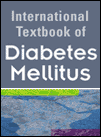Dietary Management of Diabetes Mellitus: Japanese Guidance and Methodology
Abstract
The Japanese diet is widely known to be a healthy one, with a low risk for causing cardiovascular disease. Historically rooted, Japanese gastronomic culture is unique, and includes a wide variety of foodstuffs, original flavoring recipes, and fermentation methods. A distinctive Food Guide Pyramid for Japanese people and a meal log chart, evaluating eight major treatment assessments, have been created to aid dietary guidance. The results are represented diagrammatically in this chapter, with each of the treatment assessments being scored. Straightforward to understand, this guidance is stress-free for the patient and helps ensure that the patient follows the appropriate dietary regimen.
Since diabetes treatment not only involves blood glucose level monitoring, but also the evaluation of the disease's complications course, the treatment assessments are made on a 3–6-months timeframe. The case study results indicate that the dietary guidance based on the Food Guide Pyramid is useful and beneficial for treatment of the disease.



